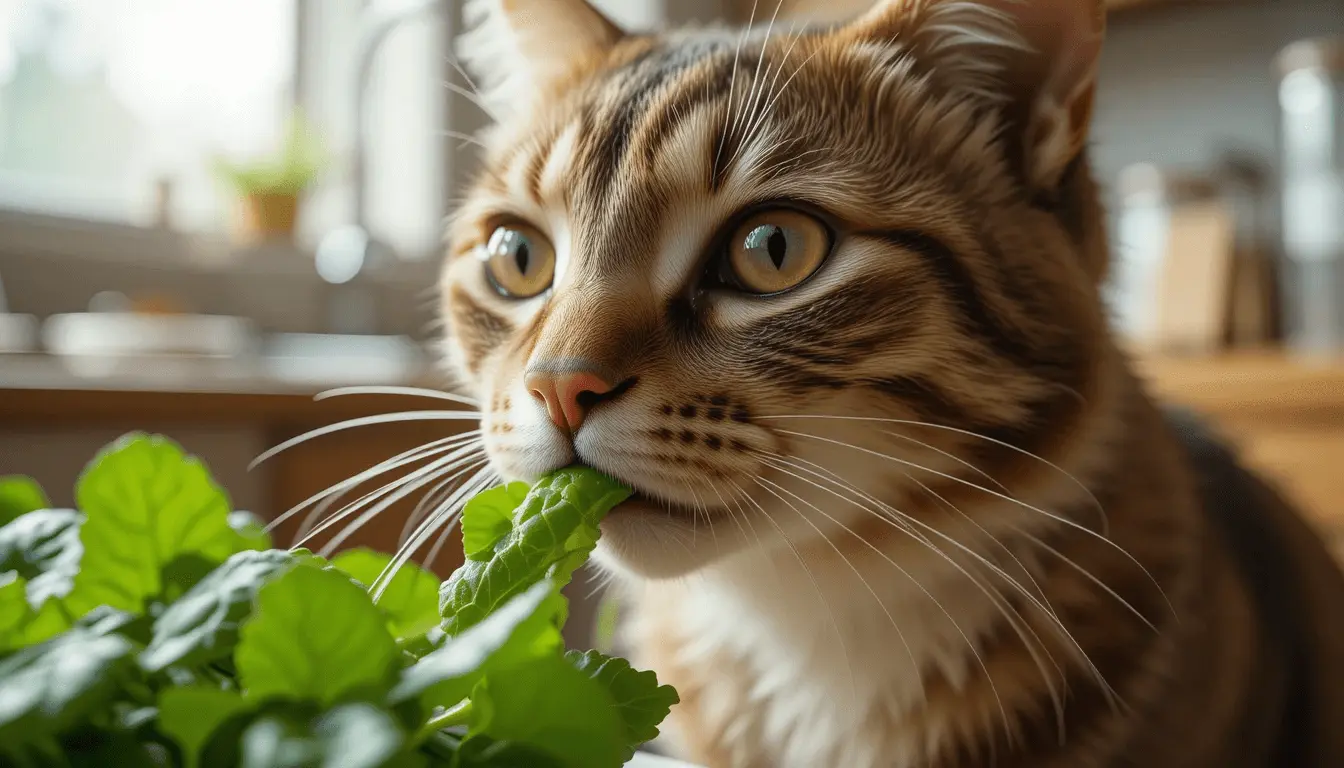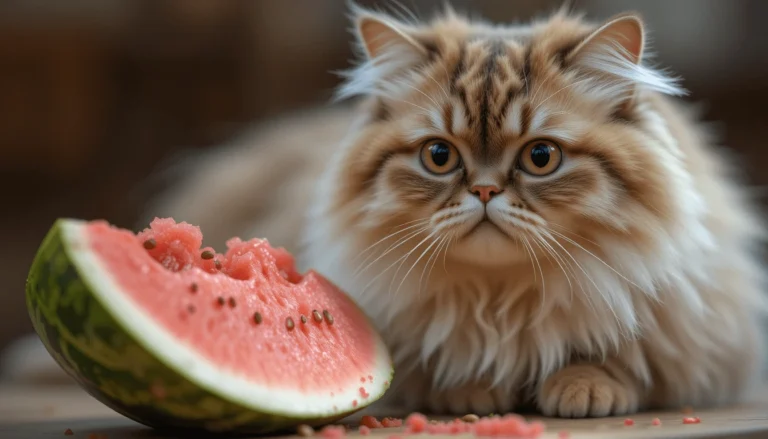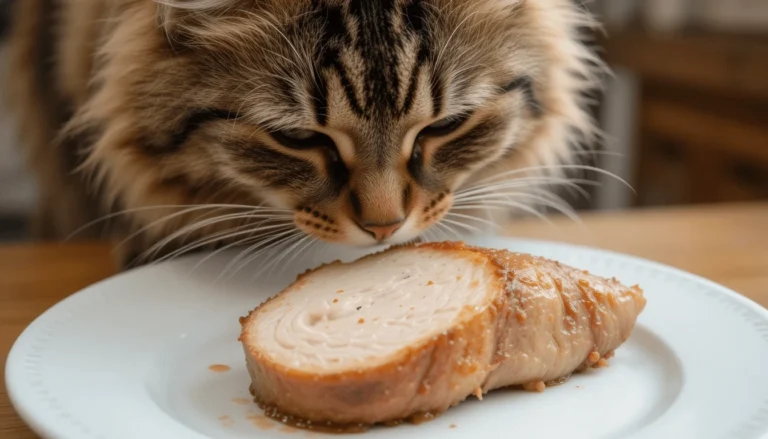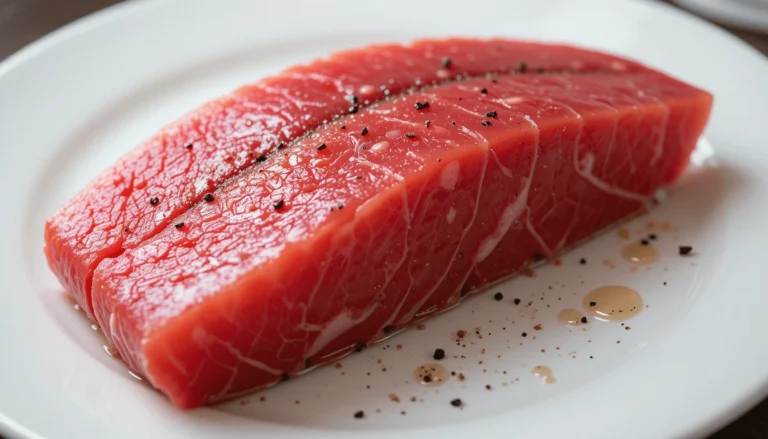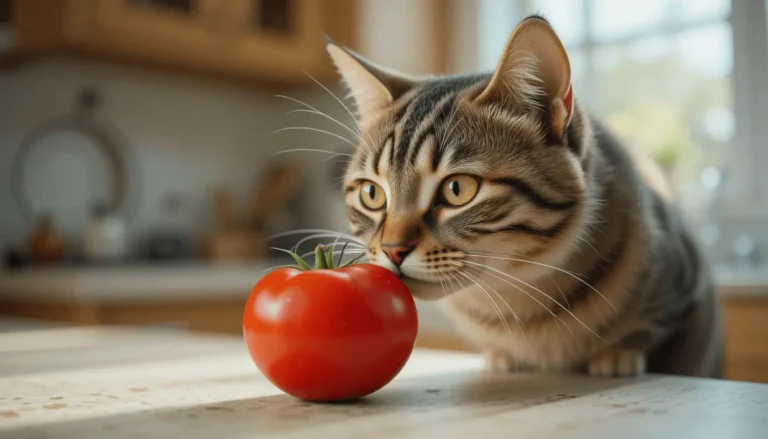Can Cats Eat spinach? Risks, Toxicity, and Safe Alternatives
Introduction
“As a cat owner, you’ve probably caught your curious feline sniffing around your salad bowl—especially when spinach is involved. But before you toss a leafy green their way, you might wonder: can cats eat spinach safely? While spinach isn’t toxic in small amounts, it’s not a perfect snack for every cat. In this post, we’ll explore the risks, potential benefits, and vet-approved alternatives to keep your whiskered companion healthy.”
Is Spinach Safe for Cats?
If you’ve ever chopped spinach for a salad and noticed your cat eyeing it with curiosity, you’re not alone. Many pet owners wonder, can cats eat spinach, or is it harmful? The answer isn’t a simple yes or no—while spinach isn’t toxic to cats in small amounts, it’s not an ideal food for them either. Here’s what you need to know.
Nutritional Value of Spinach for Cats
Spinach is packed with nutrients beneficial to humans, including:
- Vitamin A (supports vision and immune health)
- Vitamin K (aids blood clotting)
- Iron (helps prevent anemia)
- Fiber (promotes digestion)
However, cats are obligate carnivores, meaning their bodies are designed to thrive on meat, not plants. While small amounts of spinach won’t harm them, it doesn’t provide essential nutrients like taurine, which cats must get from animal-based proteins. According to the ASPCA, leafy greens like spinach are non-toxic but unnecessary in a cat’s diet.
Potential Risks of Spinach
Despite its vitamins, spinach poses some risks for cats:
- Oxalates & Kidney Concerns
Spinach contains calcium oxalates, which, in large quantities, can contribute to kidney stones—especially in cats prone to urinary issues. A study published in the Journal of Feline Medicine and Surgery notes that diets high in oxalates may increase the risk of crystal formation in susceptible cats. - Digestive Upset
A cat’s digestive system isn’t designed to process plant fibers effectively. Too much spinach can cause:- Diarrhea
- Vomiting
- Gas or bloating
- Choking Hazard
Raw spinach leaves can be tough to chew, potentially causing choking or intestinal blockages, particularly in kittens or older cats with dental issues.
Veterinary Opinions on Feeding Spinach to Cats
Most vets agree that spinach is safe in moderation but shouldn’t be a dietary staple. Dr. Jane Matheys of the Cat Doctor Veterinary Hospital advises:
“The occasional stolen spinach leaf won’t hurt your cat. But don’t actively feed it as a treat. There are better, species-appropriate alternatives.”
Key Takeaway: While spinach isn’t poisonous, its risks outweigh benefits for most cats. If you decide to share spinach with your cat, follow these guidelines:
- Cooked and chopped (to reduce oxalates and choking risk)
- Given sparingly (no more than a teaspoon occasionally)
- Monitored for reactions (discontinue if vomiting or lethargy occurs)
For cats with kidney disease or a history of urinary crystals, it’s best to avoid spinach entirely. Up next, we’ll dive deeper into toxicity concerns and safer veggie alternatives.
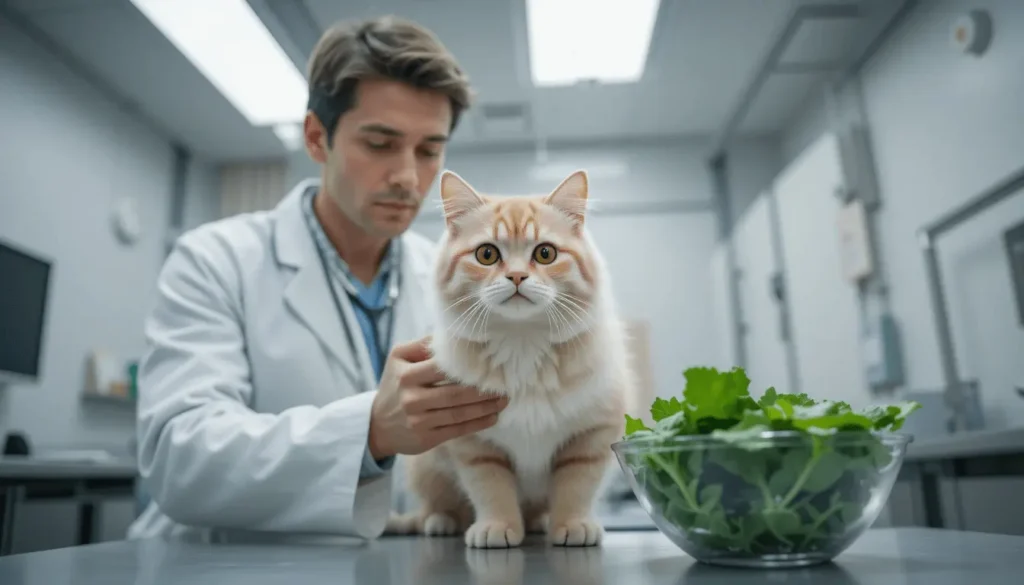
Risks and Toxicity of Spinach for Cats
While spinach isn’t immediately poisonous to cats, certain compounds make it potentially harmful in larger quantities or for cats with specific health conditions. Let’s examine the real dangers spinach may pose to your feline friend.
Oxalates and Kidney Health: A Silent Threat
Spinach contains calcium oxalates, natural compounds that can crystallize in a cat’s urinary tract. These crystals may lead to:
- Kidney stones (nephrolithiasis)
- Bladder stones (urolithiasis)
- Urinary blockages (a life-threatening emergency)
According to research from the Cornell Feline Health Center, approximately 15% of cats will develop urinary tract issues in their lifetime, with diet being a major contributing factor. Cats with pre-existing kidney disease or a history of urinary crystals should avoid spinach completely.
Did You Know?
Boiling spinach reduces oxalate content by 30-87% (per USDA data), but it’s still not risk-free for sensitive cats.
Digestive Issues: When “Healthy” Backfires
A cat’s digestive system simply isn’t designed to process plant fibers effectively. Feeding spinach may cause:
- Vomiting or Diarrhea
Their short digestive tracts aren’t designed to process fiber efficiently. - Decreased Nutrient Absorption
Oxalates bind to calcium, potentially leading to deficiencies over time. - Loss of Appetite
Gastrointestinal discomfort may make cats reject their regular food.
A 2022 study in the Journal of Animal Physiology and Animal Nutrition found that 42% of cats fed leafy greens showed mild digestive upset within 24 hours.
Allergic Reactions: Rare But Possible
Though uncommon, some cats may exhibit:
- Itchy skin or excessive grooming
- Swollen face or paws
- Difficulty breathing (seek emergency vet care)
Pro Tip: Always introduce new foods in pea-sized amounts and watch for reactions over 48 hours.
Safe Alternatives to Spinach for Cats
If you’re looking to supplement your cat’s diet with greens, these vet-approved options are far safer than spinach.
Cat-Friendly Vegetables
These provide nutrients without the risks:
| Vegetable | Benefits | How to Serve |
|---|---|---|
| Cooked Pumpkin | High in fiber, aids digestion | 1 tsp puree (no spices) |
| Steamed Carrots | Beta-carotene for immune support | Mashed or finely grated |
| Zucchini | Low-calorie hydration boost | Peeled, cooked cubes |
Important: Vegetables should never exceed 10% of your cat’s daily calorie intake.
Commercial Cat Greens
Specifically formulated for felines:
- Wheatgrass (aids hairball control)
- Barley grass (rich in chlorophyll)
- Oat grass (digestive support)
These are available as grow kits or pre-sprouted at pet stores. The American Veterinary Medical Association notes that such grasses satisfy cats’ urge to chew greens safely.
Protein-Based Treats: The Best Option
Since cats are obligate carnivores, prioritize:
- Freeze-dried chicken or fish
- Fortified cat treats with taurine
- Small pieces of cooked meat (unseasoned)
Fun Fact: A cat’s natural diet is ~70% moisture, so wet foods or broth treats better mimic their nutritional needs than dry veggies.
Final Verdict: Should Cats Eat Spinach?
While the occasional tiny bite of cooked spinach won’t harm most healthy cats, the potential risks far outweigh any benefits. Safer alternatives exist that align with feline biology.
- When in doubt:
- Always check with your vet before adding new foods to your cat’s diet
- Stick to species-appropriate treats
- Monitor for any changes in behavior or litter box habits
For cats that seem obsessed with greens, try cat grass instead—it’s specifically grown for safe feline consumption. Remember, what’s healthy for humans isn’t always suitable for our four-legged companions!
Need More Info? Check these resources:
- Safe Or Not ? Cat Food Guide
- ASPCA’s Toxic & Non-Toxic Plants List
- Cornell’s Feline Nutrition Guidelines
FAQs About Cats and Spinach
Can cats eat raw spinach?
While not toxic, raw spinach poses higher risks than cooked. The tough leaves are difficult to digest and may cause choking or intestinal blockages, especially in kittens or senior cats. Cooking softens the leaves and reduces oxalates by up to 87%, making it slightly safer—but still unnecessary.
Safer Option: If your cat steals a tiny piece, monitor for vomiting or constipation. For intentional feeding, always blanch and finely chop.
How much spinach is dangerous for cats?
There’s no exact “toxic dose,” but even small amounts can be problematic for certain cats:
- 1–2 small leaves (raw or cooked): May cause mild stomach upset in sensitive cats.
- Regular feeding (weekly): Could contribute to kidney stone formation over time, especially in breeds prone to urinary issues like Persians or Siamese.
Vet Warning: Cats with a history of kidney disease, bladder stones, or oxalate crystals should avoid spinach entirely.
My cat ate spinach and is vomiting. What should I do?
First, stay calm. Single episodes of vomiting may resolve on their own. Take these steps:
- Remove access to any remaining spinach.
- Offer water to prevent dehydration.
- Withhold food for 4–6 hours (not water).
- Monitor closely for:
- Repeated vomiting (>2x in 24 hours)
- Lethargy
- Blood in vomit or stool
When to Call the Vet: If symptoms persist beyond 24 hours or worsen, seek immediate care. Bring a sample of the spinach (if possible) to rule out pesticides or contaminants.
Are other leafy greens (kale, lettuce) safer than spinach?
Some are lower-risk but still non-essential:
| Leafy Green | Safety Level | Notes |
|---|---|---|
| Romaine Lettuce | Safest | High water content, low oxalates |
| Kale | Moderate | Lower oxalates than spinach but may cause gas |
| Arugula | Caution | Peppery taste often deters cats |
Pro Tip: Wheatgrass is the #1 vet-recommended green for cats. It aids digestion and satisfies their urge to chew plants.
Can spinach replace commercial cat food?
Absolutely not. Spinach lacks:
- Taurine (essential for heart/eye health)
- Arachidonic acid (a vital fatty acid cats can’t produce)
- Complete protein profile
Deadly Consequences: Cats fed a vegetarian or spinach-heavy diet risk:
- Blindness (taurine deficiency)
- Heart disease (dilated cardiomyopathy)
- Liver failure
Vet Quote:
“Spinach is a sometimes-treat, never a meal. Cats need meat to survive—full stop.” — Dr. Sarah Wooten, DVM

